8 Day itinerary in Bhutan, Asia
Beautiful Bhutan
As recently as 1961 all entry into Bhutan was still on horse back. Druk-yul, the land of the thunder dragon is only just emerging from the mists of its self-imposed isolation. The last Shangrila is an exotic land of high mountains and lush valleys, snow clad peaks with clear running springs, a prist... Read More

By Vishal
Overview
Physical Difficulty
Average
Recommended Age
Everyone
Operated in
English
GUIDANCE
Tour Leader
starting point
Thimphu
trip type
Private
trip attributes
Rural home stays
Hiking
Indigenous culture
Meet local people
Visit markets
Water & Coastline
Nature & Wildlife

Night

Highlights
Hike to Tigers Nest Monastery
Talo Nobgang Village Walk
Kuensel Phodrang (Buddha Point).
Paro Dzong.
Hike to Tigers Nest Monastery
Talo Nobgang Village Walk
Kuensel Phodrang (Buddha Point).
Paro Dzong.
Itinerary
High Season
Accommodation Categories
Day 1
Arrival in Paro - Transfer to the Thimphu Valley
Landing in the Paro Valley is like entering another world. Cultivated fields cover most of the valley floor, and hamlets and isolated farms dot the landscape. After arrival, your Bhutanese guide will meet you and accompany you to the capital, Thimphu, located in a large valley and overshadowed by high peaks. It's about an hour's drive from the airport. Choose to rest, or visit a few points of interest, depending on your time of arrival. Good places to start sightseeing in Thimphu are the Memorial Chorten and Kuensel Phodrang. In the evening, take a walk along Thimphu's high street and get a feel for the culture of this small capital city. Overnight: Thimphu
Guide: Included for the day
Meals: Lunch, Dinner
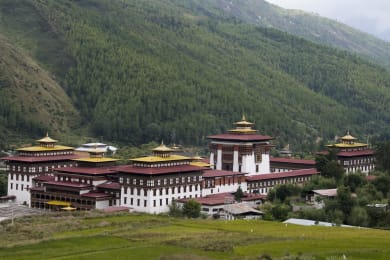
Day 2
Thimphu Sightseeing
Today, explore Thimphu according to your own interests. The following are options, although you don't need to include them all: Institute of 13 Arts and Crafts of Bhutan (Institute for Zorig Chusum). Opened in June 1997, the institute reflects Bhutan’s effort to provide opportunities for vocational training. Bamboo and wood crafts are especially popular in this region. Kuensel Phodrang (Buddha Point). Where the Buddha Dordenma resides, this is said to be one of the largest Buddhas in the world, standing 169 feet (51.5 m.) tall. Look down on Thimphu from the viewpoint. School of Astrology (Pangri Zampa Lhakhang). Bhutanese parents visit this Lhakhang to get blessings for their newborns. Built in 16th century, the Lhakhang consists of two temples. Post Office. Philatelists will be interested in the museum attached to the post office. Five galleries trace the development of the Bhutanese postal system, from the earliest mail runners to Bhutan's idiosyncratic and highly collectible modern stamps. Most importantly, you can get your photo printed onto a Bhutanese Stamp and then mail it back home to your friends. Folk Heritage Museum. This museum gives you a glimpse into traditional Bhutanese life. It displays an impressive collection of typical household objects, tools, and equipment. There are regular demonstrations of rural traditions, skills, habits, and customs, as well as educational programs for children. Royal Textile Museum. This is the place to learn about Bhutan's living national art of thagzo (weaving). The ground floor focuses on royal ghos, including the wedding clothes worn by the fourth king and his four wives. The upper floor introduces the major weaving techniques, styles of local dress, and textiles made by women and men. The museum shop offers some interesting books and fine textiles. Tashichho-Dzong. Also known as the ‘fortress of the glorious religion’, this dzong was initially built in 1641, and later rebuilt in its present form by King Jigme
Guide: Included for the day
Meals: Breakfast, Lunch, Dinner
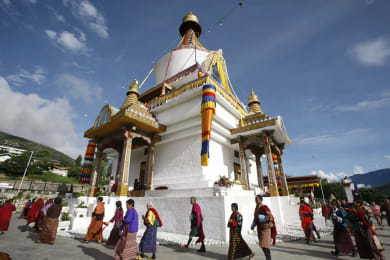
Day 3
Thimphu - Punakha ( 86 km, 3 hours)
Leaving Thimphu, we start our journey into the countryside towards the Punakha valley, the winter capital of Bhutan. The drive ascends gradually to the Dochula pass over 10300 ft, with magnificent vistas of the Himalayan range. The Dochula Monastery also known as the Druk Wangyal Khangzang Chortens is a tribute to the service and leadership of His Majesty the king. The design inspired by the Queen is a unique cluster of 108 Chortens seen from all directions. The descent to Punakha is vibrant and colorful, with the fluttering prayer flags adding to a rich topography dotted by terrace farming and rivers flowing through. Option A: Later, we traverse the Punakha countryside walking through paddy fields to the Pana Village to see the `Chimi Lhakhang’ built by the great Lama Drukpa Kinley in 1400 to subdue local demons. The temple is a popular pilgrimage point for all Bhutanese and is specially revered by women for its fertility powers. Option B: After lunch, we see the historic Punakha Dzong sprawled at the confluence of the Phochu (male) and Mochu (female) rivers. It was built by Shabdrung Nawang in 1637 and serves as the winter residence of the head abbot, Je Khenpo and headquarters of the district administration. Overnight: Punakha
Guide: Included for the day
Meals: Breakfast, Lunch, Dinner
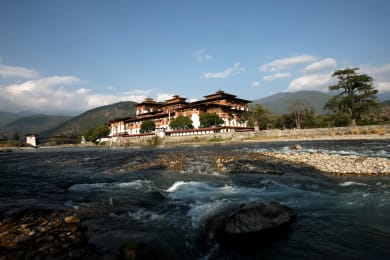
Day 4
Punakha Sightseeing
Chorten Ningpo and Khabasa Village ( Option 1) After breakfast drive to Chorten Ningpo, which dates back to the 17th century. The chorten is a little-known spot with a magnificent statue of Maitreya (the future Buddha) and images of the great lamas of the Drukpa lineage. This magical spot was once a dense forest inhabited by evil spirits. The great oak tree outside the monastery is said to have grown out of the blazing log that the ‘Divine Madman’ threw (the tree’s bark is still black from where it was burnt). In 2005 the monastery began to house orphans from the nearby village, and founded a small Buddhist educational institution where the children can study traditional Buddhist scriptures and texts as well as Western subjects. The hike back is around 45 minutes, going past Thodrup Lhakhang. Sangchhen Dorji Lhuendrup Nunnery and Talo Nobgang Village Walk ( Option 2 ) Sangchhen Dorji Lhuendrup Nunnery has one of the biggest bronze statues of Avalokiteshvara – a bodhisattva embodying infinite compassion – created entirely by local Bhutanese artisans. The temple complex also houses a permanent higher learning and meditation centre for nuns, for both religious training and life skills. Nobgang monastery, dating back to the 17th century, was built as the residence for Zhabdrung Ngawang Namgyal, a Tibetan Buddhist lama. Start your hike down and you’ll see the spectacular valleys, mountains and Punakha Dzong. The hike will go through chir pine trees, passing the school, farms and farmhouses. You will come across an amazing tree (local people believe the tree is the walking stick of the ‘Divine Madman’, planted upside down) before you reach the finishing point. Overnight: Punakha
Guide: Included for the day
Meals: Breakfast, Lunch, Dinner

Day 5
Punakha to Paro (127 km, 4 hours)
After an early breakfast, set out on a beautiful day hike to Khamsum Yulley Namgyal Monastery. A 30-minute drive from Punakha Dzong will bring you to the base of the hill on which this temple is built. From the car park, cross a suspension bridge and walk through rice fields before you start climbing a moderately inclined trail surrounded by pine trees. It takes about 1 hour from the car park to hike up to the temple, and 30 minutes to hike down. Soak in the serene natural beauty and participate in the rite of lighting butter lamps in the temple. Post hike, we start our journey into the countryside Paro valley, stopping at the Dochula pass for Lunch, photographs and hoisting of prayer flags for well-being, good health, love and success. Overnight: Paro
Guide: Included for the day
Meals: Breakfast, Lunch, Dinner
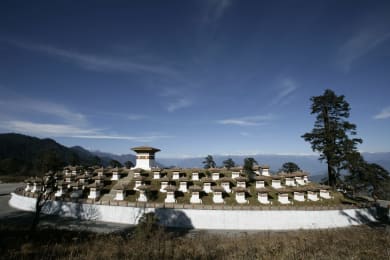
Day 6
Paro Sightseeing
Today is devoted to exploring quaint Paro and its surrounding areas. Your sightseeing itinerary can include: • Paro Dzong. Also called Rinpung Dzong, or the Fortress of a Heap of Jewels. Constructed in the early 15th century as a diminutive fort, it was developed into a much more commanding fortress in 1646. This is one of the kingdom’s finest examples of traditional Bhutanese architecture. Once, great catapults here flung stones at invading Tibetans. Today it houses a monastic school. • Ta Dzong. This watchtower was built in 1649 to protect the undefended dzong, and renovated in 1968 to house the National Museum. The unusual round building is said to be in the shape of a conch shell. Displays include an impressive collection of thangkas, both ancient and modern, depicting Bhutan's important saints and teachers, as well as fearsome festival masks grouped according to their tsechu dances. There's a natural-history gallery with a 3D map of Bhutan, while the Heritage Gallery contains such oddities as an egg laid by a mule and a horse horn attributed to Guru Rinpoche. • Kyichu Monastery. This is one of the oldest monasteries in the country, built in the 7th century by Tibetan King Songsten Gampo. The story goes that a giant demoness lay across the whole area of Tibet and the Himalayas and was preventing the spread of Buddhism. Butter lamps are the most powerful offering because their light symbolizes wisdom. Just as a lamp dispels darkness, offering light from a butter lamp represents removing the darkness of ignorance to attain Buddha's luminous clear wisdom. • Drugyel Dzong ruins. The name means victorious fortress, and it was built 1644-49 to commemorate the Bhutanese victory over the Tibetan-Mongol forces. In 1951 it was engulfed in fire by accident. On a clear day, Mt. Jumolhari, Bhutan's holy peak, can be seen from here. If you'd rather get active than embark on general sightseeing, today you can choose to hike to Drakharpo Monastery. After a short drive fr
Meals: Breakfast, Lunch, Dinner
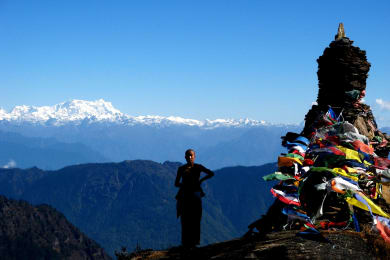
Day 7
Hike to Tiger's Nest Monastery
After breakfast, drive for about 25 minutes to begin your hike to one of Bhutan’s most revered pilgrimage sites, the Taktshang Lhakhang, popularly known as the Tiger’s Nest Monastery. The trek offers spectacular views of this sacred monastery, which is perched precariously on a sheer rock face 3000 feet (900 m.) above the valley floor. Legend has it that Guru Rimpoche, father of Bhutan’s stream of Mahayana Buddhism, arrived in the Paro Valley more than a millennium ago on the back of a tigress. He meditated for three months in a cave, which was converted into this monastery. The hike from the base to the cafeteria will take at least 90 minutes. From there, it’s about an hour’s trek through some stunning landscape to reach the monastery. On the return, stop once more at the cafeteria for lunch. The trek is easy to moderate, and takes 2-3 hours in total. Ponies are available for the uphill portions at an additional cost.
Guide: Included for the day
Meals: Breakfast, Lunch, Dinner
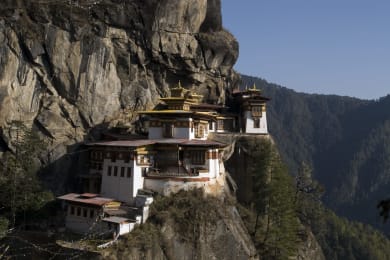
Day 8
Depart
In the morning our representatives from Trophel Tours & Treks will escort you to Paro International Airport and bid Good-bye and pleasant flight back home. Tashi Delek! Hope you will visit us again!
Guide: Included for the day
Meals: Breakfast
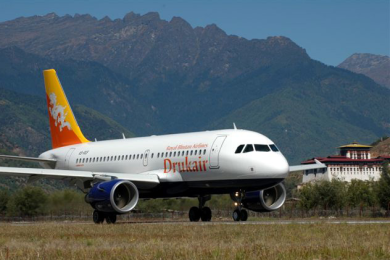
What’s Included
Meals
- Lunch (7)
- Dinner (7)
- Breakfast (7)
Transport
- Vehicle with driver
Activities
- All Sightseeing
Extras
- • Accommodation in a government-approved 3-star hotel on a twin or single room basis.
- • All government taxes including sustainable development fee ( USD 65 per night per person) ·
- • Arrangement of Bhutan Visa & Visa Fee (USD 40 per person) ·
- • Licensed English speaking guide for the entire period of tour ·
About Vishal
TEAM LEAD

Baboo Certified
Rural home stays
Yoga
Meditation
Hiking
Wellness retreat
Indigenous culture
Psychedelic Ceremonies
Meet local people
Visit markets
Purposeful Travel
Nature & Wildlife
Water & Coastline
Having had the opportunity to live in Bali, Maldives, Thailand and Australia (Studied International Tourism and Hospitality) has given me the prospect to understand, how unique Bhutan is and has given me the experience to understand clients needs.
Travel that Makes a Difference
By choosing to travel with us, you support local communities, wildlife, and the environment. We are dedicated to positively impacting the world through every journey we offer.

Let’s regenerate the planet together
We overcompensate your entire journey’s carbon footprint including flights - for free.
$290.00 USD